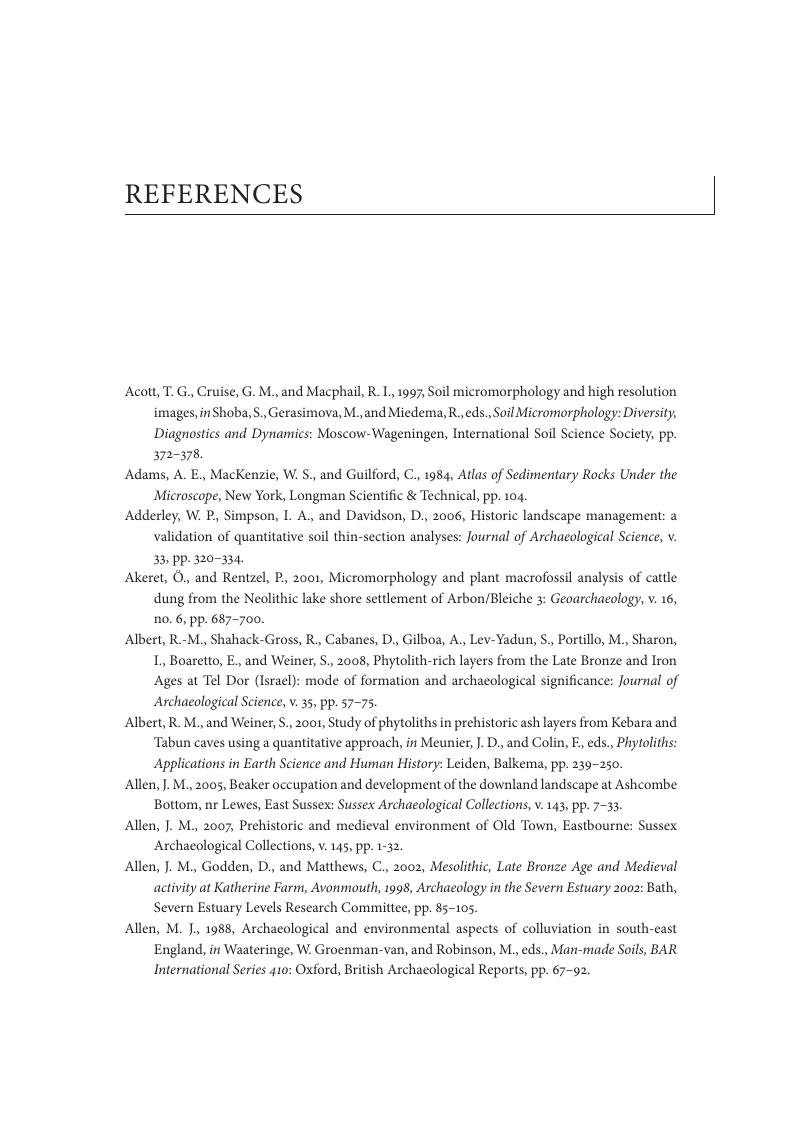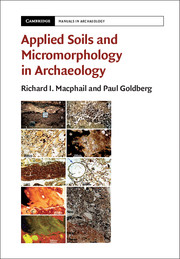Book contents
- Applied Soils and Micromorphology in Archaeology
- Cambridge Manuals in Archaeology
- Applied Soils and Micromorphology in Archaeology
- Copyright page
- Dedication
- Contents
- Figures
- Tables
- Boxes
- Preface
- Acknowledgments
- Part I Background Approach and Methods
- Part II Soils and Sediments
- Part III Archaeological Materials
- Part IV Features and Activities in the Landscape
- Site Gazetteer
- References
- Index
- References
References
Published online by Cambridge University Press: 18 December 2017
- Applied Soils and Micromorphology in Archaeology
- Cambridge Manuals in Archaeology
- Applied Soils and Micromorphology in Archaeology
- Copyright page
- Dedication
- Contents
- Figures
- Tables
- Boxes
- Preface
- Acknowledgments
- Part I Background Approach and Methods
- Part II Soils and Sediments
- Part III Archaeological Materials
- Part IV Features and Activities in the Landscape
- Site Gazetteer
- References
- Index
- References
Summary

- Type
- Chapter
- Information
- Applied Soils and Micromorphology in Archaeology , pp. 529 - 583Publisher: Cambridge University PressPrint publication year: 2017



